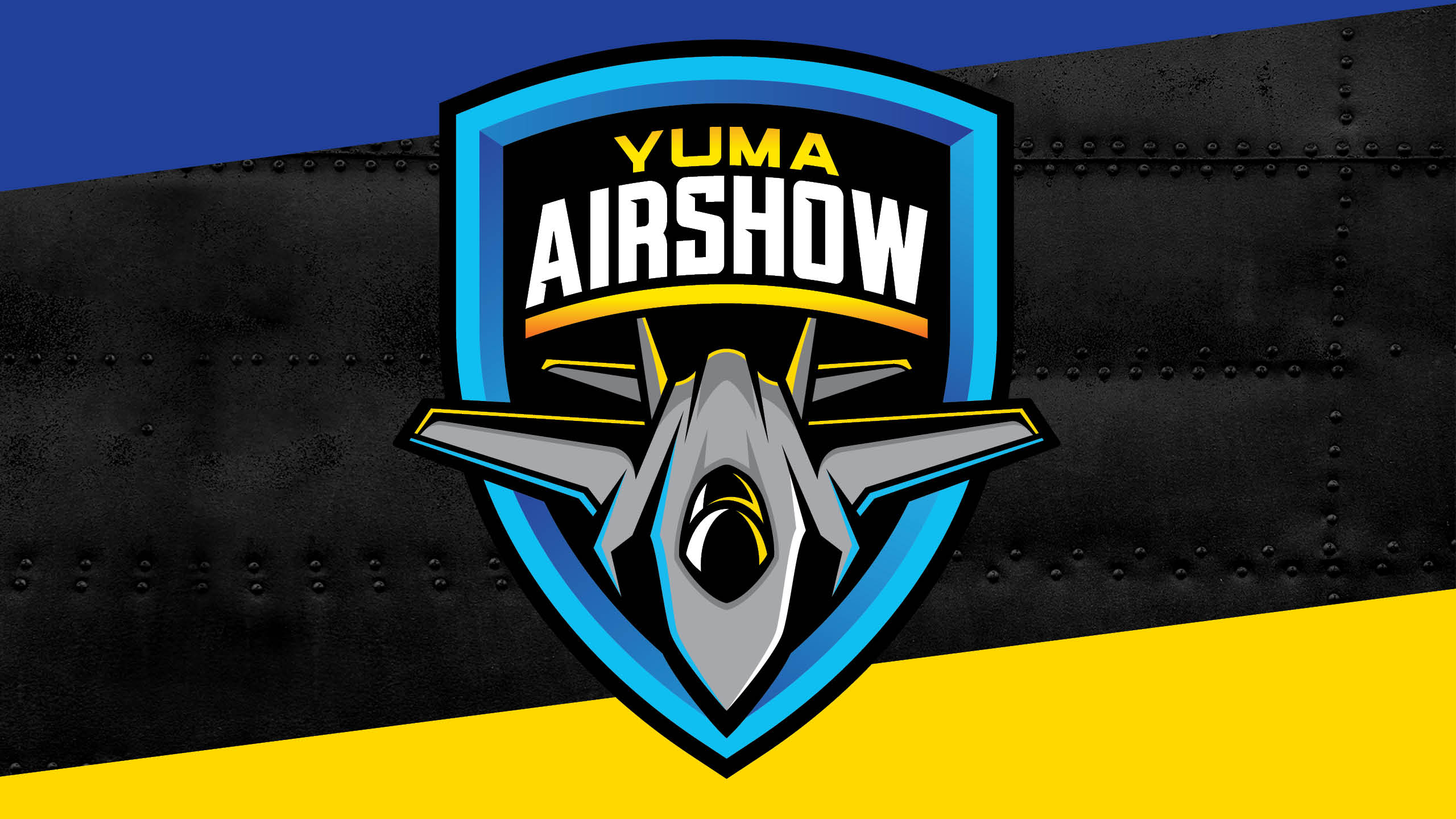Yuma Airshow

Date
Saturday, March 11, 2023Time
9:00 AM - 3:00 PMAddress
For Airshow schedule, performers, tickets, sponsorship and more please visit http://www.yumaairshow.com/
The History of MCAS Yuma
The year was 1928. The place - 640 acres covered with cactus, brush, and desert wildlife, near Yuma. It was that year that Col. Benjamin F. Fly persuaded the federal government to lease the land from Yuma County. Three weeks later, a 20-year lease with an option for an additional 20 years at $1 per year, was signed. Fly Field became a reality.
Aviation was in its infancy, and Fly Field became the center of attention in Yuma. During the summer of 1928, it was used as a stopover point for 25 planes in a New York to Los Angeles air race. It was used sporadically by private aircraft until 1941 when the U.S. government, through the Civil Aeronautics Administration, authorized an expenditure for permanent runways.
When the United States entered World War II, an air base was erected with the astounding speed which characterized the war effort and by early 1943, Yuma Army Air Base began graduating classes of pilots. The base became one of the busiest flying schools in the nation, training pilots of AT-6 single engine trainers, T-17 multi-engine trainers and B-17 Flying Fortresses.
At the end of the war, all flight activity here ceased, and the area was partially reclaimed by the desert. During the period of inactivity, it was controlled successively by the War Assets Administration, the U.S. Corps of Engineers, and the Department of the Interior's Bureau of Land Reclamation, which used it as a headquarters for its irrigation projects.
On July 7, 1951, the Air Force reactivated the base, and the 4750th Air Base Squadron resumed training as part of the Western Air Defense Forces. The airfield was named Yuma Air Base but was renamed Vincent Air Force base in 1956 in memory of Brig. Gen Clinton D. Vincent, a pioneer of bombing techniques, who died in 1955.
From Air Force Base to Marine Corps Air Station
The Facility was signed over to the Navy Jan. 1, 1959, and nine days later, Col. L.K. Davis became the first commanding office of the newly designated Marine Corps Auxiliary Air Station. On July 20, 1962, the designation was changed to Marine Corps Air Station. From 1962 until 1987, the air station served primarily as a training base for pilots assigned to Marine Corps Crew Readiness Training Group-10 flying the F-4 Phantom, A-4 Skyhawk and AV-8A Harrier.
Since then, the main runway has been extended to 13,300 feet (enough concrete for 37 miles of two-lane highway) and the Tactical Aircrew Combat Training System, has been added. The system is designed to provide realistic air-to-air combat training with electronically simulated weapons firing for all Navy and Marine squadrons.
In 1987, Marine Aircraft Group-13, with Marine Attack Squadrons 211, 214, 311 and 513 replaced MCCRTG-10 as the major tenant command aboard the station. The move also brought Marine Wing Support Squadron-371 to Yuma, joining Marine Air Control Squadron-7 and 2nd Light Antiaircraft on Yuma's ranges.
On September 1, 1994, after the deactivation of 2nd LAAM Bn., 1st LAAM Bn., was reactivated, consisting of H&S Battery and three firing batteries. 1st LAAM Bn., then merged with MACS-7 on July 11, 1997, resulting in the re-designation of MACS-7 as MACS-(Reinforced).
Marine Corps Community Services
Marine Corps Community Services (MCCS) is a comprehensive set of programs that support and enhance the operational readiness, war fighting capabilities, and life quality of Marines, their families, retirees and civilians. Our programming includes employment, personal financial management, education and transition assistance; fitness and recreation, deployment support and family team building, child care and youth activities, prevention, counseling and victim support; golf courses; dining and entertainment; and shopping. MCCS is valued by leadership as being a user-friendly and a responsive single portal that provides constant and unwavering support to Marines and their families throughout their entire service or affiliation with the United States Marine Corps. MCCS delivers goods and services at over 2,250 facilities with a staff of more than 12,000 employees worldwide.
Our Mission
To take care of Marines and their families by providing quality of life programs, products, and services in support of the Marine Corps objectives.
Our Values
The Marine Corps holds true to the core values of honor, courage, and commitment. These core values serve as fundamental touchpoints for moral character, professional behavior and conduct of the Marine Corps. Every Marine Corps Community Services team member is additionally guided by similar customer service values including courtesy, responsibility, and loyalty.